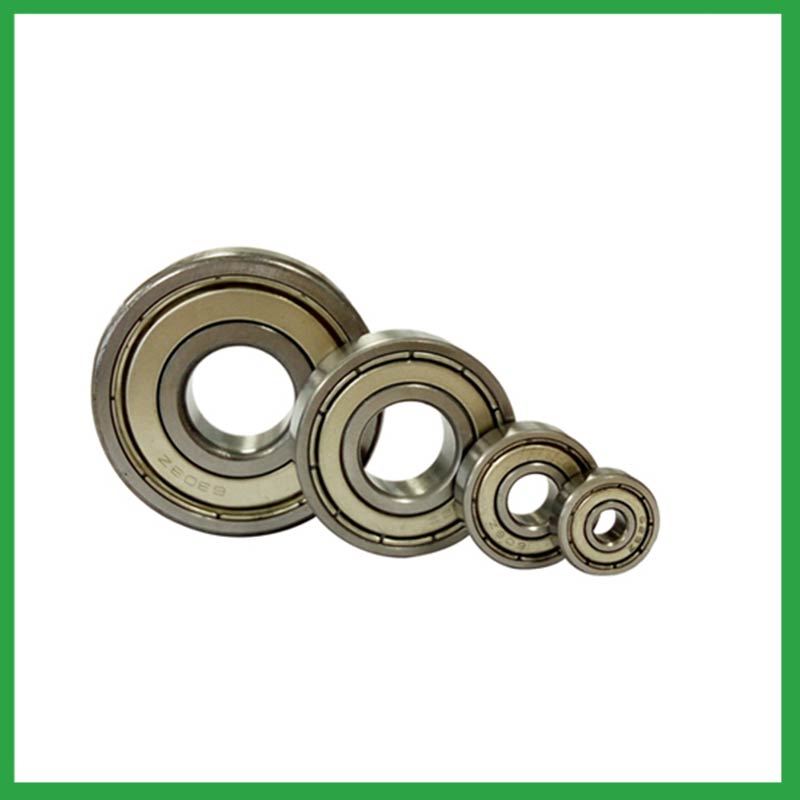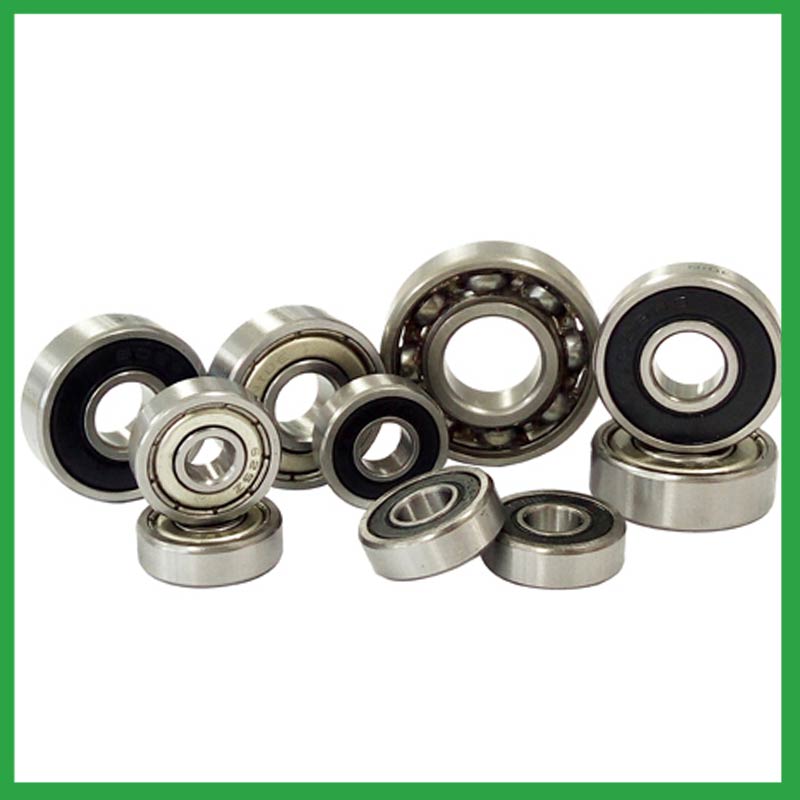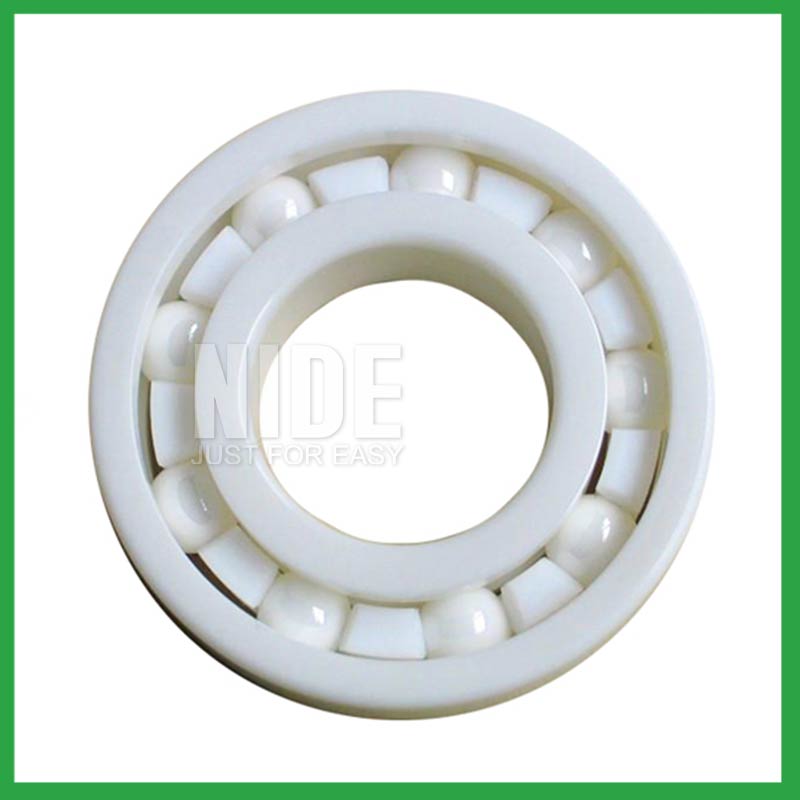2024-03-01
Ningbo Haishu Nide International Co., Ltd is located in Ningbo City, Zhejiang Province. It is a high-tech enterprise that integrates research and development, application, production, and sales. Mainly producing high-performance insulation paper,magnet,carbon brush,commutator,shaft,thermal protector,fan,deep groove ball bearings, spherical roller bearings,ball bearing,motor cover and lamination, etc. The product has a series of characteristics such as oil-free self-lubricating, wear resistance, corrosion and rust resistance, acid, alkali, salt and gas corrosion resistance, no magnetic and electrical insulation, high temperature and cold resistance, light weight, etc. It is widely used in industries such as electric automotive motor,fan motor,washing machine motor,BLDC motor,air condition motor,compress motor,water pump motor,electric bicycle motor,single and three phase induction motor,servo motor.
By ceaselessly improve our quality and, our products win high praise for our favorable price, excellent service and timely delivery. No matter before or after sales, from quality to price, we have the complete and professional management system.
ball bearing---FAQs Guide
1.What faults will occur during the operation of ball bearings?
Being one of the top ball bearing manufacturers in China, We attach great importance to this detail.
1. Wear and Tear: Over time, the constant rotation and friction of the balls against the inner and outer raceways can cause wear and tear, leading to loss of precision and eventual failure.
2. Corrosion: Exposure to moisture, chemicals, and other corrosive elements can cause the bearing components to rust and corrode, leading to reduced performance and premature failure.
3. Fatigue: Repeated loading and unloading of the bearing can cause fatigue in the metal, leading to cracks and ultimately failure.
4. Contamination: Dirt, dust, and other particles can enter the bearing and cause damage to the raceways and balls, leading to increased friction and wear.
5. Improper Lubrication: Insufficient or improper lubrication can cause increased friction and heat, leading to premature wear and failure of the bearing.
6. Misalignment: If the bearing is not properly aligned with the shaft or housing, it can cause uneven loading and stress on the bearing, leading to premature failure.
7. Overloading: Exceeding the recommended load capacity of the bearing can cause excessive stress and damage to the components, leading to failure.
8. Improper Installation: Incorrect installation techniques, such as using excessive force or not properly seating the bearing, can cause damage to the components and lead to failure.
9. High Temperatures: Excessive heat can cause the bearing components to expand and contract, leading to increased friction and wear, and ultimately failure.
10. Improper Handling: Mishandling of the bearing, such as dropping or impacting it, can cause damage to the components and lead to failure.
2.What is a high-speed ball bearing?
Our ball bearing products have competitive and differentiated advantages, and actively promote digital transformation and innovation. A high-speed ball bearing is a type of bearing designed to operate at high rotational speeds, typically above 10,000 revolutions per minute (RPM). It consists of a series of small, hardened steel balls held in place by a cage or retainer, which allows for smooth and efficient rotation. The balls are separated by a thin layer of lubricant, such as oil or grease, to reduce friction and wear. High-speed ball bearings are commonly used in applications such as motors, turbines, and machine tools, where high speeds and precision are required. They are also used in sports equipment, such as skateboards and rollerblades, to reduce friction and allow for smooth movement.
3.What is simplified ball bearing?
A simplified ball bearing is a type of bearing that uses a series of small balls to reduce friction between two moving parts. It is designed to support radial and axial loads and allow for smooth rotation of the parts. The simplified design typically consists of an inner and outer ring, a cage to hold the balls in place, and the balls themselves. This type of bearing is commonly used in various applications, such as in machinery, vehicles, and household appliances. It is called simplified" because it has a simpler design compared to other types of bearings

4.How to calculate the rated load of ball bearings?
We have rich industry experience and professional knowledge, and have strong competitiveness in the market.
The rated load of a ball bearing is the maximum load that the bearing can withstand without experiencing permanent deformation or failure. It is an important factor to consider when selecting a bearing for a specific application.
To calculate the rated load of a ball bearing, you will need to know the following parameters:
1. Dynamic load rating (C): This is the maximum load that a bearing can withstand for a specified number of rotations (usually one million) without experiencing fatigue failure.
2. Basic dynamic load rating (C0): This is the load that a bearing can withstand for an infinite number of rotations without experiencing fatigue failure.
3. Bearing geometry: The size and shape of the bearing, including the number and size of balls, will affect its load-carrying capacity.
Once you have these parameters, you can use the following formula to calculate the rated load of a ball bearing:
Rated load = C / (P x L10)
Where:
C = Dynamic load rating P = Equivalent dynamic bearing load L10 = Rated life of the bearing (in millions of revolutions)
The equivalent dynamic bearing load (P) is calculated as:
P = XFr + YFa
Where:
X = Radial load factor Fr = Radial load Y = Axial load factor Fa = Axial load
The values for X and Y can be found in bearing manufacturer's catalogs or can be calculated using the bearing geometry and load direction.
The rated life of the bearing (L10) is the number of revolutions that 90% of a group of identical bearings can complete before the first signs of fatigue occur. This value can also be found in bearing manufacturer's catalogs.
It is important to note that the rated load of a bearing is based on ideal operating conditions and may vary in real-world applications. It is recommended to select a bearing with a rated load that is higher than the expected load in the application to ensure reliable performance.
5.What are the characteristics of deep groove ball bearings?
Our products & services cover a wide range of areas and meet the needs of different fields.
1. Radial Load Capacity: Deep groove ball bearings have a high radial load capacity, making them suitable for applications with heavy radial loads.
2. Axial Load Capacity: These bearings also have a moderate axial load capacity, allowing them to withstand some amount of thrust or axial loads.
3. Low Friction: Deep groove ball bearings have a low friction coefficient, which means they can operate at high speeds with minimal heat generation.
4. Versatility: These bearings are versatile and can accommodate both radial and axial loads in both directions.
5. Simple Design: The design of deep groove ball bearings is simple, making them easy to install and maintain.
6. Wide Range of Sizes: These bearings are available in a wide range of sizes, making them suitable for various applications.
7. Low Noise and Vibration: Deep groove ball bearings operate quietly and produce minimal vibration, making them suitable for precision applications.
8. High Durability: These bearings are designed to withstand high speeds, heavy loads, and harsh operating conditions, making them highly durable.
9. Cost-Effective: Deep groove ball bearings are cost-effective and have a long service life, making them a popular choice for many applications.
10. Self-Aligning: Some deep groove ball bearings have a self-aligning feature, allowing them to compensate for misalignment and shaft deflection.
6.How much load can ball bearings withstand?
We pay attention to the transformation of intellectual property protection and innovation achievements. Your OEM or ODM order design we have a complete confidentiality system. The load capacity of ball bearings depends on various factors such as the size and type of bearing, the material it is made of, and the speed at which it is operating. Generally, ball bearings can withstand loads ranging from a few hundred pounds to several thousand pounds. However, the exact load capacity will vary for each bearing and should be determined by consulting the manufacturer's specifications. It is important to note that exceeding the recommended load capacity can lead to premature failure of the bearing.

7.What are the advantages of ball bearings compared to linear bearings?
We focus on teamwork and communication to achieve common goals, We attach great importance to this detail.
1. Lower Friction: Ball bearings have a lower coefficient of friction compared to linear bearings, which means they require less force to move and can operate more smoothly.
2. Higher Load Capacity: Ball bearings can handle higher loads than linear bearings, making them suitable for heavy-duty applications.
3. Reduced Wear and Tear: The rolling motion of ball bearings reduces wear and tear on the bearing and the surface it is moving on, increasing their lifespan.
4. Lower Noise and Vibration: Ball bearings produce less noise and vibration compared to linear bearings, making them ideal for applications where noise and vibration are a concern.
5. Self-Alignment: Ball bearings are self-aligning, which means they can accommodate misalignment between the shaft and the housing, ensuring smooth operation.
6. Compact Design: Ball bearings have a smaller footprint compared to linear bearings, making them suitable for applications with limited space.
7. Cost-Effective: Ball bearings are generally more cost-effective than linear bearings, making them a popular choice for many applications.
8. Easy to Install: Ball bearings are relatively easy to install and require minimal maintenance, making them a convenient option for many applications.
9. Wide Range of Sizes and Types: Ball bearings are available in a wide range of sizes and types, making them suitable for various applications and industries.
10. Versatility: Ball bearings can be used in both radial and axial applications, providing versatility and flexibility in design and use.
8.How to maintain ball bearings?
We pay attention to employee development and benefits, and provide a good working environment in order to improve the efficiency of employees and improve the quality management of ball bearing products.
1. Keep them clean: Regularly clean the ball bearings with a degreaser or solvent to remove any dirt, dust, or debris that may have accumulated on them. This will prevent the bearings from getting clogged and ensure smooth operation.
2. Lubricate them: Apply a small amount of lubricant to the bearings to reduce friction and wear. Use a high-quality lubricant that is specifically designed for ball bearings.
3. Check for wear and tear: Inspect the bearings regularly for any signs of wear and tear such as rust, pitting, or cracks. If you notice any damage, replace the bearings immediately to prevent further damage.
4. Proper storage: When not in use, store the bearings in a clean and dry place. Avoid storing them in humid or dusty environments as this can cause corrosion and damage.
5. Proper installation: Make sure to install the bearings correctly according to the manufacturer's instructions. Improper installation can cause premature wear and damage to the bearings.
6. Avoid overloading: Do not overload the bearings beyond their recommended capacity. This can cause excessive stress and damage to the bearings.
7. Regular maintenance: Schedule regular maintenance checks for your equipment to ensure that the bearings are functioning properly. This will help identify any issues early on and prevent major problems.
8. Replace worn bearings: If you notice any signs of wear or damage, replace the bearings immediately. Continuing to use worn bearings can lead to equipment failure and safety hazards.
9. Use protective covers: If the bearings are exposed to harsh environments, consider using protective covers to prevent dirt, moisture, and other contaminants from entering and damaging the bearings.
10. Seek professional help: If you are unsure about how to maintain or replace the bearings, seek help from a professional. They will have the expertise and tools to properly maintain and replace the bearings.
9.What scenarios are tapered roller bearings suitable for?
We adhere to the principle of quality first and have a complete production quality management system and quality inspection process.
1. Automotive industry: Tapered roller bearings are commonly used in the automotive industry for various applications such as wheel bearings, differential gears, and transmissions.
2. Industrial machinery: Tapered roller bearings are suitable for heavy-duty industrial machinery such as construction equipment, mining equipment, and agricultural machinery.
3. Railway industry: Tapered roller bearings are used in the railway industry for applications such as locomotive axles, wheelsets, and gearboxes.
4. Aerospace industry: Tapered roller bearings are used in aircraft engines, landing gear, and other critical components in the aerospace industry.
5. Heavy-duty equipment: Tapered roller bearings are suitable for heavy-duty equipment such as cranes, forklifts, and material handling equipment.
6. Power transmission: Tapered roller bearings are used in power transmission equipment such as gearboxes, pumps, and generators.
7. Paper and pulp industry: Tapered roller bearings are used in paper and pulp processing equipment for applications such as rollers, gears, and shafts.
8. Mining and construction: Tapered roller bearings are suitable for heavy-duty applications in the mining and construction industries, such as crushers, conveyors, and excavators.
9. Agriculture: Tapered roller bearings are used in agricultural equipment such as tractors, combines, and harvesters.
10. Marine industry: Tapered roller bearings are used in marine equipment such as propeller shafts, rudders, and winches.

10.What are the characteristics of mating bearings?
1. Symmetrical design: Mating bearings are designed to be symmetrical in shape and size, allowing them to fit together perfectly.
2. High precision: These bearings are manufactured with high precision to ensure a tight fit and smooth operation.
3. Interchangeability: Mating bearings are designed to be interchangeable, meaning they can be used in different combinations without affecting performance.
4. Self-aligning: These bearings have the ability to self-align, which allows them to compensate for any misalignment between the mating parts.
5. Low friction: Mating bearings are designed to have low friction, which reduces wear and tear and increases the lifespan of the bearings.
6. High load capacity: These bearings are capable of handling high loads, making them suitable for heavy-duty applications.
7. Lubrication: Mating bearings are designed to be lubricated, which helps reduce friction and wear, and also helps dissipate heat.
8. Corrosion resistance: These bearings are often made from materials that are resistant to corrosion, making them suitable for use in harsh environments.
9. Noise reduction: Mating bearings are designed to reduce noise and vibration, providing a smoother and quieter operation.
10. Easy installation: These bearings are designed for easy installation, with features such as snap rings or flanges that help secure them in place.